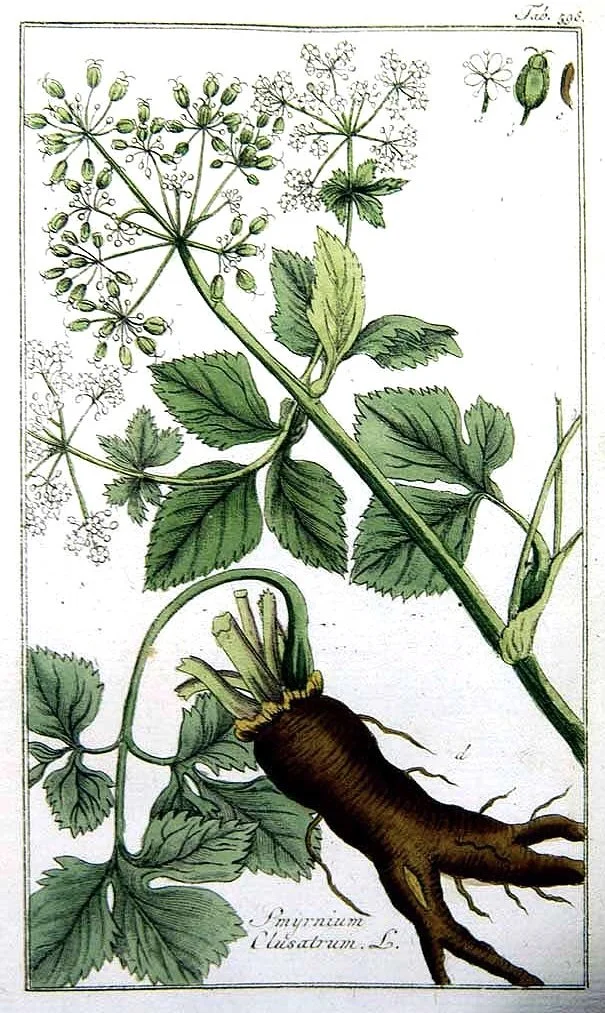Alexanders
Alexanders
ALEXANDERS
Smyrnium olusatrum
An old world vegetable now rarely grown. Native to ancient Macedonia and named for Alexander the Great. Known in classical and medieval Europe as Macedonian Parsley or Alexandrian Parsley, it had occupied gardens for many millennia before being displaced by modern selections of celery. It is still found about the ruins of abandoned castles and monastaries. In old herbals and materia medica this species is frequently listed as Black Lovage on account of its unique black seeds.
All parts of these plants are edible and nutritious and feature prominently in medieval cookery. Mature plants grow to around 4' and have glossy green leaves and glowing yellow-green flowers. Leaves are used like parsley, flower buds pickled, and petioles prepared much like celery. The large fragrant taproots, too, may be dug and eaten either fresh or roasted. Black seeds exude the fragrance of myrrh (for which the genus is named) and may be ground for seasoning like black peppercorns.
In spring and early summer, leaves, petioles and buds may be harvested sparingly from established plants. Roots may be dug in autumn. This species behaves like a biennial in many gardens, but in others it seems quite perennial. Allowed to self-sow, Alexanders will eventually colonize politely where it is happy. In northern gardens, these plants are wont to virtually disappear some years, and in other years they appear en masse. Allow Alexanders a spacious corner of its own in the garden, perhaps with self-sowing edible annuals like Borage and Calendula and soil-shading perennial groundcovers like Musk Strawberry and Roman Chamomile.
Sow these seeds directly into the garden in autumn, or into pots to overwinter in a sheltered location outdoors. Tuck into moist soil and press to keep seed snug. Germination begins in early spring. Alexanders is adaptable and even salt-tolerant, but in most gardens prefers moist well-drained soil in full sun. Water generously and fertilize with seaweed until established. Hardiness is difficult to ascertain and seems to depend on other aspects of culture. Worth trying in zones 5-8, and especially in maritime regions. To sow in spring, first remove the black husk of each seed. Kept moist in bright light at cool room temperature, these seeds may begin to germinate in about a month, although we do highly recommend sowing these seeds outdoors rather than indoors.
Packet contains at least 30 seeds.
